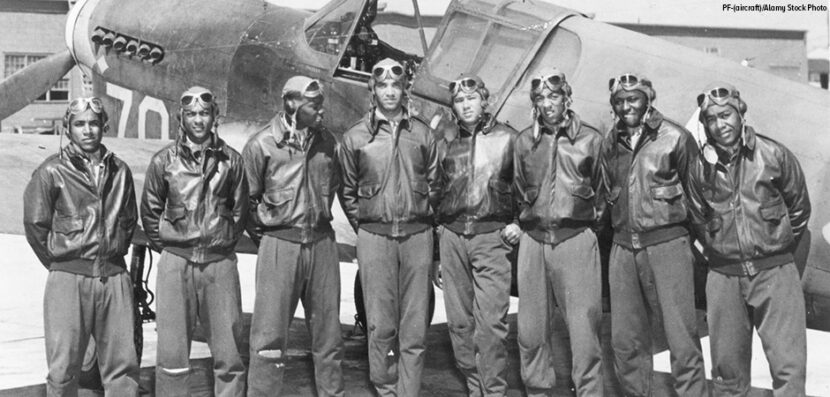Black History Month: The Tuskegee Airmen
Every February, Black History Month is a time to remember, honor, and celebrate the contributions of Black Americans. This week’s post takes a closer look at the legacy of the Tuskegee Airmen. During World War II, they became the first Black American pilots in U.S. military history.
Who Were the Tuskegee Airmen?
From the country’s first military flight in 1909 until 1940, African Americans were not allowed to be pilots in the military. The U.S. military in the first half of the twentieth century, reflected the racial discrimination and racial segregation that was common throughout the United States at this time. Military leaders did not give African American pilots opportunities to serve in this capacity. Also, being a pilot in the military automatically made that individual an officer. Many white soldiers did not want to be led by African American officers.
In 1940, President Franklin D. Roosevelt, who was running for a third term, promised to let African Americans train to become military pilots. After he won the election, the War Department announced that the Army would start training African American pilots in Tuskegee, Alabama. But these pilots would be segregated or kept apart from white pilots. While white pilots could train at bases all over the country, African American pilots could only train at Tuskegee. Nevertheless, nearly 1,000 men completed the training course. Another 13,000 were trained as ground personnel. The Army’s first African American flying combat unit was the 99th Pursuit Squadron. Over time they became better known as the Tuskegee Airmen.
A Squadron Like No Other
In 1943, the 99th Pursuit Squadron deployed overseas, led by a Black officer named Col. Benjamin O. Davis Jr.–who later became the first Black general in the U.S. Air Force. The squadron, as it was now called, flew first to North Africa, and worked with white fighter squadrons to support Allied forces in the Mediterranean Sea. But the pilots did not experience much combat. In their first six months overseas, the Tuskegee Airmen shot down only one enemy plane. But in the summer of 1944, the airmen wer reassigned to a new fighter group that allowed them to fly combat missions deep into enemy territory.
The Tuskegee Airmen flew alongside bombers as protective escorts. The Airmen were extremely successful at this, losing far fewer bombers than any other escort group during the same period. The Airmen lost only 27 bombers during their 179 escort missions. By the end of the war in Europe, 72 Tuskegee Airmen pilots had shot down 112 enemy planes. The Airmen had also earned 96 Distinguished Flying Crosses (one pilot earned the award twice), and three Distinguished Unit Citations.
In 1948, President Harry Truman signed an executive order to officially integrate the armed services. The following year, the last all-Black flying units were deactivated at Lockbourne Air Force Base in Ohio. However, many of the Tuskegee Airmen remained in the Air Force, but now they served in integrated (racially diverse) units. Some flew combat missions during the Korean and Vietnam wars. The Air Force’s first three Black American generals were all Tuskegee Airmen. Other Airmen went on to play other important roles outside of the military: Tuskegee Airman Coleman Young, for example, became the first Black mayor of Detroit.
Challenging and Protecting History
When Donald Trump became president on January 20, 2025, he placed a ban on diversity, equity, and inclusion (DEI) initiatives and programs throughout the U.S. government. This ban is supported by new Defense Secretary Pete Hegseth. The Air Force temporarily stopped showing two of its training videos: one about the Tuskegee Airmen, and the other about Women Air Force Service Pilots (WASPs) during World War II.
However, after a review, Hegseth reversed the Air Force’s decision and directed that both videos be shown as part of its training programs. Tuskegee Airmen, Inc.–a group dedicated to preserving the legacy of the Airmen–said that they believe that the accomplishments of the Tuskegee Airmen are an important part of American history and should continue to be taught to all Air Force trainees.



